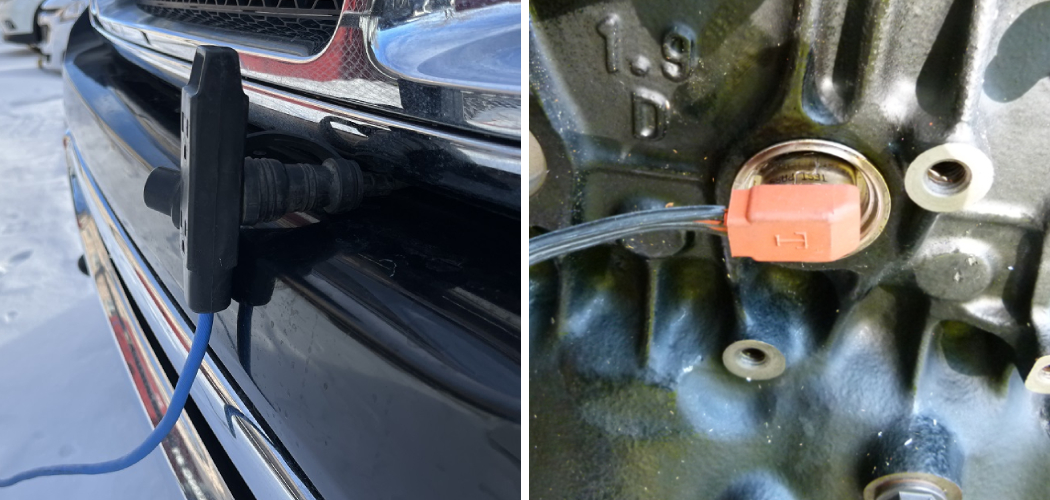Diesel engines are notoriously stubborn in cold weather, struggling to start as temperatures dip due to the thickening of fuel and engine oil. The solution—understanding how to use a block heater diesel—lies at the core of this article.
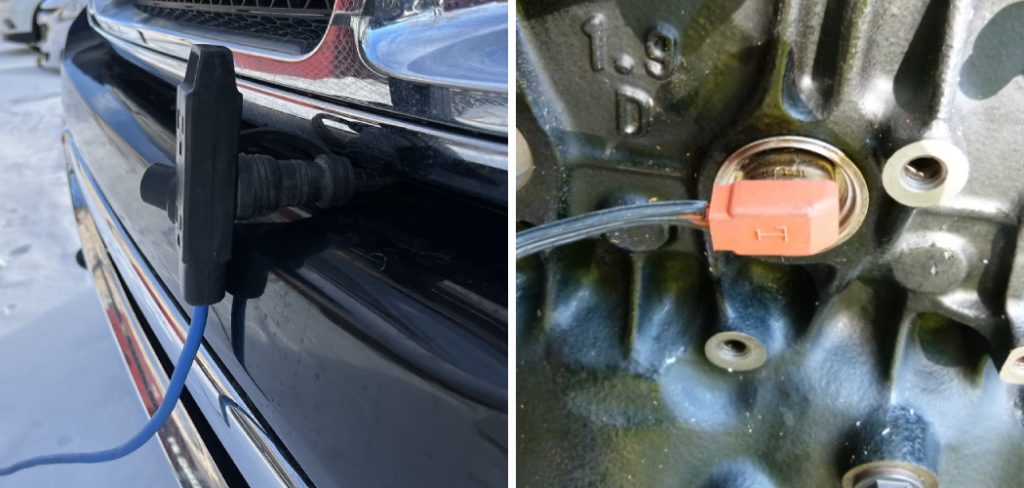
We’ll explore the challenges faced by diesel engines in the cold, the workings and benefits of using a block heater, and how to select, use, and maintain one effectively. This knowledge can significantly enhance your engine’s cold-weather performance, reduce wear and tear, and improve fuel efficiency—a win for both your vehicle and the environment.
Understanding Diesel Engines in Cold Weather
Diesel engines, with their need for higher temperatures to ignite the fuel-air mixture, are especially affected by the drop in mercury. Unlike gasoline engines, which use a spark to ignite the fuel, diesel engines rely on heat generated by compressed air. However, the air is denser in cold weather and doesn’t heat up as easily or as much, leading to starting difficulties.
Further compounding this issue is the fact that diesel fuel and engine oil become more viscous at lower temperatures. This increased thickness means the engine must work harder to circulate these fluids, leading to extra strain and potentially more wear.
Glow plugs, an essential component designed to aid combustion by heating the air in the combustion chamber of a diesel engine, also struggle to reach their optimal temperature in cold conditions, delaying the start and even endangering the battery. As the battery attempts to provide the necessary power to the glow plugs and starter motor, it’s subjected to greater stress and faster drain, reducing its efficiency and lifespan.
It’s not just immediate starting difficulties; these cold-weather challenges can lead to more significant, long-term engine wear and tear. The thicker fluids mean less effective lubrication, and the additional strain on the battery can lead to a failure to start the engine at all. Consequently, understanding how to use a block heater diesel can mitigate these issues, ensuring your vehicle responds reliably even when the temperature plummets.
What is a Block Heater, and How Does it Work?
A block heater is an engine-heating device designed to ease the start-up of diesel engines during cold weather. The most common types include coolant immersion heaters, freeze plug heaters, and magnetic heaters.
Coolant immersion heaters are inserted into the vehicle’s radiator hose or coolant reservoir, warming the antifreeze mixture and circulating through the engine by convection. Freeze plug heaters replace one of the engine’s freeze plugs and directly warm the engine block. Magnetic heaters, on the other hand, attach externally to the oil pan or engine block and use electromagnetic heat to radiate warmth into the engine.

The essential working principle behind all these heaters is heat transfer. By pre-warming the engine’s vital fluids, they reduce viscosity, which aids in circulation and allows for more immediate ignition. Power requirements typically range from 100 to 1500 watts, with most block heaters running on standard household 110-120-volt AC power.
For safety, it’s crucial to use a grounded three-prong plug, ensure the cord is away from moving parts and hot surfaces, and disconnect the heater before starting the engine. Proper use can prevent electrical hazards and reduce the risk of oil or coolant fires.
Benefits of Using a Block Heater
Implementing a block heater in a diesel-engine vehicle presents several significant benefits that enhance the engine’s performance in cold weather and contribute to its overall longevity and efficiency. Reduced engine wear and tear is one of the primary advantages offered by a block heater.
By pre-warming the engine oil and coolant, a block heater diminishes the viscosity of these fluids. This, in turn, improves lubrication upon starting, resulting in less friction between moving parts and decreasing the potential for engine damage over time.
Furthermore, block heaters contribute to easier engine starts, eliminating the strain that frigid temperatures inflict on the vehicle’s battery and starter system. A warm engine means a more dependable start, sparing drivers the frustration and inconvenience of failed ignition attempts.
Coupled with this is the benefit of faster cabin heating, which stems from the engine reaching its operating temperature more swiftly, thus shortening the time passengers wait for a comfortably heated vehicle interior.
Improved fuel efficiency is another notable advantage, as a pre-warmed engine optimizes fuel combustion, reducing the amount of fuel required to maintain engine operation.
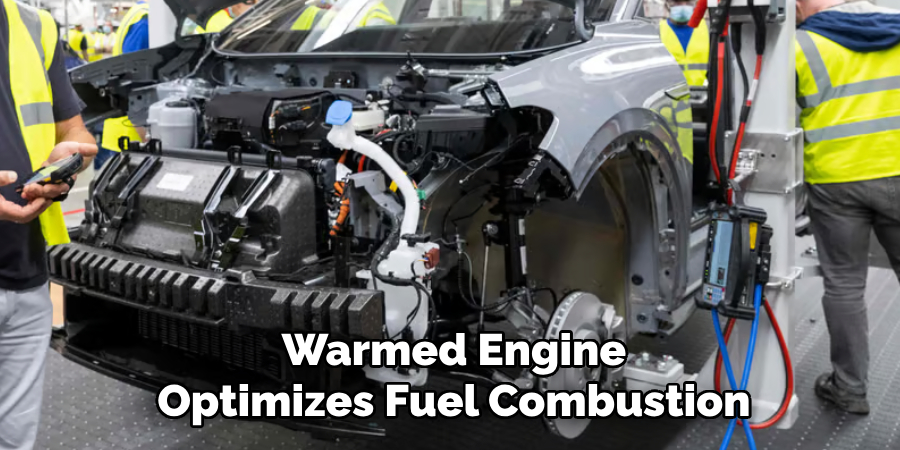
This efficiency also plays a critical role in reducing emissions—engines that start and run at their proper operating temperature endorse a cleaner exhaust and contribute less to environmental pollution. Overall, using a block heater is a proactive measure that ensures immediate comfort and reliability and supports an eco-friendly, cost-effective, and mechanically sound driving experience.
Choosing the Right Block Heater for Your Diesel Engine
Selecting the ideal block heater for your diesel engine requires considering several key factors that will impact both performance and suitability. Matching the heater to the engine type and size is crucial, as different engines have varying heating requirements. A heavy-duty truck will require a more robust heating system compared to a smaller passenger diesel vehicle.
The regional climate and expected minimum temperatures also play a decisive role in your choice. In extremely cold regions where temperatures routinely dip below freezing, a more powerful heater or a model with enhanced features like a thermostat may be necessary to ensure optimal engine start-up. In contrast, milder climates might not necessitate such a high wattage or additional functionalities.
Power availability and the logistical aspect of connecting the heater to electricity must be addressed as well. Verify that you have a reliable power source that is readily accessible where the vehicle is parked. Suppose the parking spot is far from an outlet. In that case, you’ll need a durable, weather-resistant extension cord that can safely handle the wattage without becoming a tripping hazard or getting damaged by the environment.
Budget is another important factor, as block heaters come in a range of prices with varying features. While it may be tempting to opt for a cheaper model, investing in a heater with features such as a timer can lead to long-term savings by reducing power usage only to the necessary periods. A thermostat can also enhance efficiency by preventing the engine from overheating, which is important for safety and prolonging the heater’s and engine’s life.
When it comes to finding a compatible block heater for your specific vehicle, the best starting point is often your vehicle’s dealership or manufacturer’s website. Many offer a list of recommended models or even proprietary heaters designed specifically for their engines. For aftermarket options, retailers that specialize in automotive parts are a valuable resource. They usually have databases that can match your vehicle model with compatible heaters.
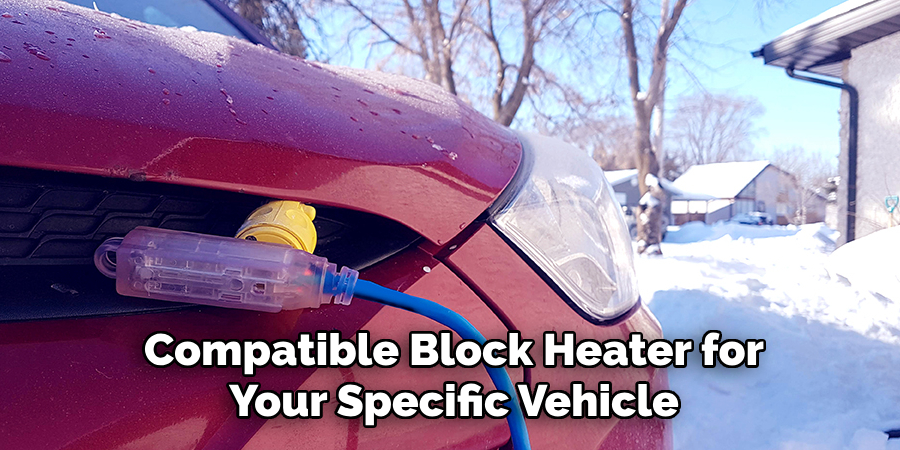
Moreover, connecting with local diesel mechanic shops or forums where experienced diesel vehicle owners gather can yield useful recommendations tailored to your needs and local climate conditions.
In summary, the right block heater is a balance of all these considerations – it should be adequately powerful for your climate, compatible with your engine, within your budget, and possess any desired extra features that can facilitate convenience and efficiency. Evaluating each of these aspects will ensure you select a block heater that meets your diesel engine’s requirements and keeps it running smoothly in cold weather.
How to Use a Block Heater Diesel: A Beginner’s Guide
Using a block heater correctly is about ensuring an easy start on a cold winter day and maintaining safe operating conditions for both the vehicle and the heater itself. To safely utilize a block heater, follow these steps:
- Inspection Before Use: Regularly inspect the block heater cord for any signs of wear and tear or damage. Look for exposed wires, cracks in the insulation, or any signs of melting that could indicate a potential electrical hazard.
- Proper Installation: Ensure that the block heater is installed correctly according to your vehicle’s manufacturer guidelines and that it fits securely in the designated port.
- Plugging It In: Always use a grounded outlet and a three-prong plug when connecting your block heater. Avoid using adapters or extension cords that are not designed for outdoor use.
- Operating the Heater: The optimal time to plug in the block heater is 2-3 hours before you plan to start the vehicle. Using an outdoor timer can help manage this efficiently without wasting electricity.
- Unplugging Before Starting: Always unplug the block heater before turning the ignition key. Starting the engine while the heater is plugged in can lead to electrical shorts and other damage.
For maintenance, storing your block heater in a dry, clean place when not in use is important. After the winter season, coil the cord loosely to prevent bending damage and cover it to protect against dust and insects. Regularly check the heater’s components, such as the heating element and plug, to ensure they are in good condition.
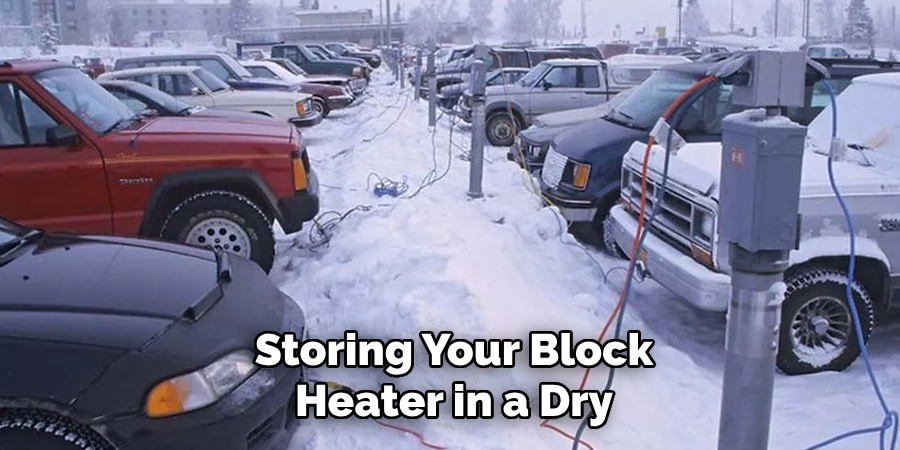
Moreover, it’s commendable to have your block heater inspected by a professional as part of your vehicle’s seasonal servicing. They can check for any underlying issues that could affect performance and safety.
By following these guidelines on safely using and maintaining your block heater, you will extend its lifespan and reap its benefits for many cold seasons to come, ensuring that the heater remains a reliable asset in your winter driving toolkit.
Tips and Tricks for Optimal Block Heater Performance
Effective use of a block heater not only preserves the integrity of your engine in freezing conditions but also maximizes efficiency and minimizes electricity costs. To achieve this, understanding pre-heating times in relation to temperature and engine size is crucial.
As a rule of thumb, larger engines and more severe cold require longer pre-heating. For example, in moderate cold, a small-to-medium engine may only need to be pre-heated for 1-2 hours, whereas in extreme cold, a heavy-duty engine might benefit from 3-4 hours of pre-heating.
Utilizing timers is another savvy strategy. Setting a timer to activate your heater before your expected departure time prevents unnecessary power consumption. If your block heater doesn’t have a built-in timer, an external one can serve the purpose.
Similarly, a thermostat can enhance efficiency by activating the heater only when the engine temperature drops below a certain point, making it a smart addition for those looking for convenience and energy savings.
In regions where the cold is not just biting but extreme, combining a block heater with a battery warmer can be especially effective. This tandem approach keeps both the engine and battery fluids at operational temperatures, reducing strain upon startup and prolonging the life of the battery.

Remember, while block heaters are powerful tools in your winter arsenal, they are also electrical devices that require respect and understanding of their operation for both safety and performance. By following these strategies and regularly maintaining your heater, you’ll find your cold starts easier, your engine healthier, and your winter driving experience calmer.
Troubleshooting Common Block Heater Issues
Block heaters are robust devices, but they can occasionally run into problems that may impact their functionality. Vehicle owners need to know how to troubleshoot some of the common issues that may arise.
One issue is when the heater is not working despite being plugged in. This could be due to a number of factors, such as a tripped circuit breaker, a blown fuse, or a malfunctioning power outlet.
First, ensure that the circuit breaker hasn’t tripped and the outlet has power. Next, inspect the block heater’s plug and cord for any visible damage or defects. If the electrical components seem intact, the problem might lie with the heating element itself, requiring professional inspection.
Another problem is when the engine does not start even after pre-heating. If your engine fails to start after using the block heater, ensure that the heater is plugged in for an adequate amount of time, considering outdoor temperature and engine size, as discussed previously. If time isn’t the issue, it might be a sign that the block heater isn’t functioning correctly or that there’s an unrelated issue with the vehicle’s battery or starter.
Damage to the block heater cord or plug can also cause issues. Exposure to the elements, animals, or vehicular activity can damage these components. Regularly inspect the cord and plug for any cuts, frays, or signs of wear. If damage is found, avoid using the heater until these parts are replaced to prevent electrical hazards.
For each of these issues, the following troubleshooting steps and potential solutions can be of help:
- Verify that there is power at the electrical outlet.
- Check the block heater’s plug and cord for visible damage.
- Use a multimeter to test the heater’s electrical resistance. If the circuit is open, the heating element may need replacing.
- Consult the vehicle’s owner manual for any specific troubleshooting tips related to the heater.
If the problem persists after basic troubleshooting or if your inspections reveal damage or malfunctions beyond simple fixes, it’s important to consult with a professional mechanic. Continuing to use a faulty block heater not only risks vehicle damage but also personal injury from electrical mishaps. A certified mechanic can conduct a comprehensive diagnosis and provide safe, reliable repairs. Remember, preventative annual inspections can often catch these issues before they lead to bigger problems.
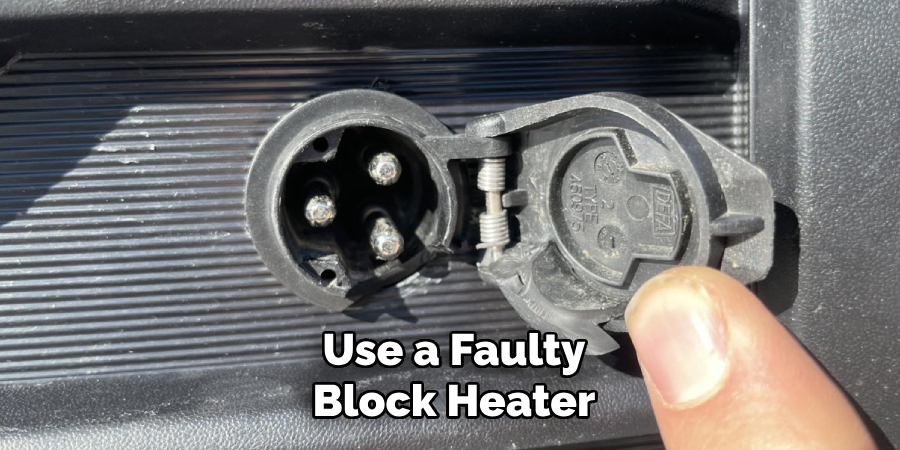
Alternative Cold Weather Starting Solutions
Diesel engines can be particularly stubborn in cold weather, necessitating alternative solutions for reliable starting. Battery boosters and jump starters are popular, providing the much-needed amperage to kick-start an engine in frigid conditions.
The advantage is their convenience and immediate assistance, particularly for drivers who find themselves with a weakened or dead battery. However, they are reactive rather than preventive solutions and do not warm the engine beforehand, which can lead to increased engine wear over time.
Glow plug pre-warming kits directly address the cold start issue at its source by heating the combustion chamber, allowing for smoother engine ignition. These kits are highly effective as they reduce the strain on the engine during start-up. However, their use is limited to diesel engines with glow plugs, and they require a functioning electrical system, meaning that they won’t solve power issues stemming from a dead battery.
In contrast, winter-grade fuel additives work to improve fuel flow and prevent gelling in cold temperatures, thus aiding in start-up. These additives can be a straightforward preventative measure mixed into the fuel system before the onset of cold weather.
They are less expensive than mechanical devices and do not rely on electrical components. On the downside, they do not warm the engine or battery, and their effectiveness can vary based on the diesel fuel quality and the extreme nature of the temperatures experienced.

Each alternative has its own pros and cons compared to block heaters. While block heaters primarily focus on warming the engine block and require foresight and a power source, the alternatives range from reactive emergency solutions to preventative chemical measures.
Vehicle owners should consider the severity of their typical winter conditions, the specific needs of their vehicle, and their personal convenience preferences when choosing between these cold-weather starting aids. Pairing these tools with regular vehicle maintenance is always prudent to ensure peak winter performance.
Environmental Considerations and Sustainability
Block heaters, though essential for ensuring engine reliability in cold climates, have ecological ramifications linked to energy consumption and the associated carbon footprint. Block heaters function by drawing on electrical power, which, depending on the energy source, could contribute to greenhouse gas emissions. This is particularly true in regions where fossil fuels primarily generate electricity.
Compared to alternative cold start methods, block heaters tend to be more energy-efficient since they directly warm the engine, reducing the need for excess fuel burn during start-up. This can lead to a lower overall carbon footprint as compared to jump-starting or tow services, which do not pre-warm the engine. Moreover, the reduced engine wear facilitated by block heaters leads to better fuel efficiency over the long term, contributing further to sustainability.
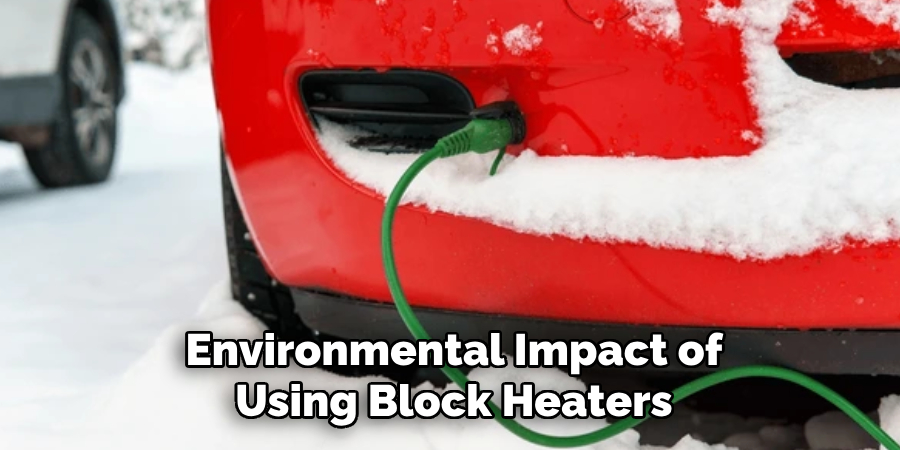
To minimize the environmental impact of using block heaters, several eco-friendly practices can be implemented by vehicle owners. Firstly, utilizing timers and thermostats can significantly cut down unnecessary energy usage, allowing the block heater to operate only when needed and at optimal temperatures. This ensures the vehicle is ready for startup without excess energy consumption.
Secondly, vehicle owners should consider choosing energy-efficient block heater models. Latest innovations in this field have led to devices that consume less power while still delivering effective heating, acting as a step towards lowering the environmental impact.
Lastly, exploring renewable energy sources for powering block heaters could pave the way for sustainable usage. For instance, connecting the heater to a solar-powered battery system or using electricity from a grid supplied by wind or hydroelectric power can drastically reduce the carbon footprint associated with the use of block heaters.
Each of these practices not only helps in making the use of block heaters more sustainable but also contributes to the broader goal of responsible energy consumption. As technology advances and awareness grows, the integration of eco-friendly solutions in vehicle maintenance routines, such as block heating, is an important stride toward environmental stewardship.

Conclusion
In summary, understanding how to use a block heater diesel is crucial for maintaining engine performance in cold climates. Block heaters provide a proactive means to ensure vehicle reliability and longevity by warming engines before start-up, resulting in lower emissions and better fuel efficiency. Though necessary, their usage demands thoughtful energy consumption to mitigate environmental impact.
As we’ve discussed, employing timers and energy-efficient models, coupled with renewable energy sources, represents responsible block heater utilization. We encourage drivers to adopt these practices, ensuring the safety and effectiveness of their vehicles and contributing to global sustainability efforts.

